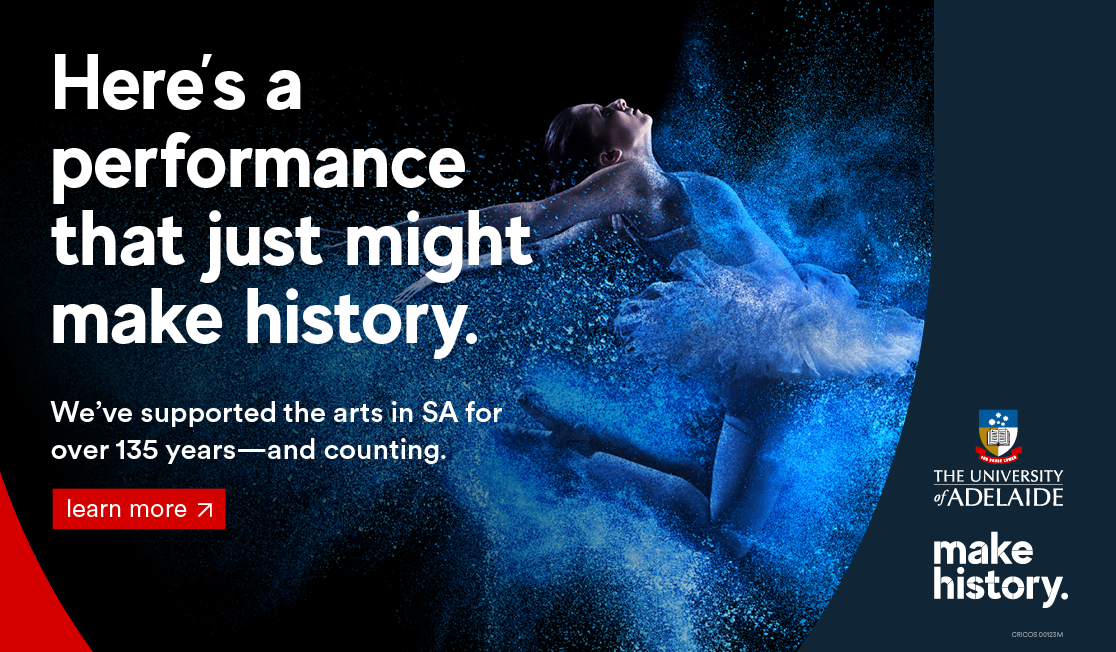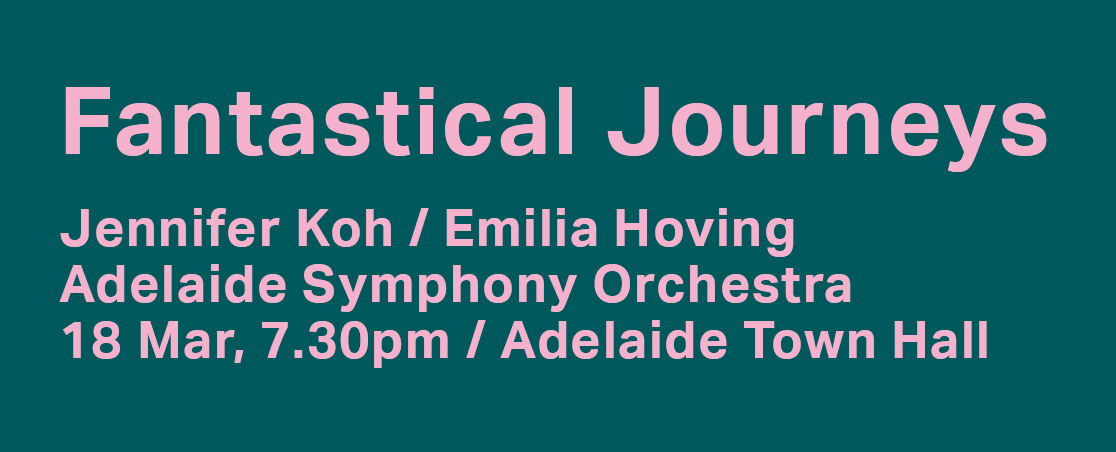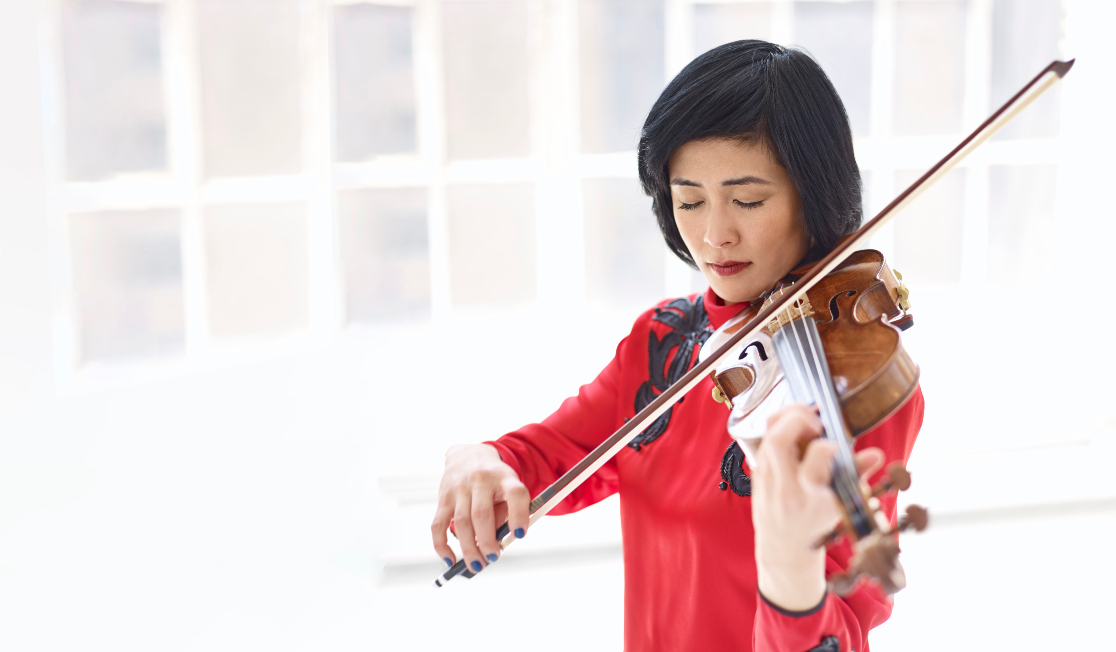Your Digital Program
Info

Contents
Credits
Program
Program Note: Sibelius
Program Note: Missy Mazzoli
Program Note: Rimsky-Korsakov
Biographies
About the Adelaide Symphony Orchestra
download the text only program (pdf) - coming soon
Credits
Emilia Hoving, conductor
Jennifer Koh, violin
Adelaide Symphony Orchestra
VIOLINS
Elizabeth Layton** (Guest Concertmaster)
Cameron Hill** (Associate Concertmaster)
Helen Ayers* (Guest Principal 1st Violin)
Alison Heike** (Principal 2nd Violin)
Lachlan Bramble~ (Associate Principal 2nd Violin)
Janet Anderson
Ann Axelby
Erna Berberyan
Minas Berberyan
Gillian Braithwaite
Julia Brittain
Hilary Bruer
Elizabeth Collins
Jane Collins
Belinda Gehlert
Zsuzsa Leon
Alexis Milton
Michael Milton
Ambra Nesa
Julie Newman
Liam Oborne
Emma Perkins
Alexander Permezel
Kemeri Spurr
VIOLAS
Justin Julian**
Justine Marsden~ (Guest Associate)
Martin Alexander
Lesley Cockram
Linda Garrett
Anna Hansen
Rosi McGowran
Michael Robertson
Cecily Satchell
CELLOS
Simon Cobcroft**
Sharon Grigoryan~ (Guest Associate)
Joseph Freer
Sherrilyn Handley
Andrew Leask
Gemma Phillips
David Sharp
Cameron Waters
DOUBLE BASSES
David Schilling**
Jonathon Coco~
Jacky Chang
Harley Gray
Belinda Kendall-Smith
Gustavo Quintino
FLUTES
Kate Proctor** (Guest Principal)
Lisa Gill
PICCOLO
Julia Grenfell*
OBOES
Joshua Oates**
Renae Stavely~
COR ANGLAIS
Peter Duggan*
CLARINETS
Dean Newcomb**
Darren Skelton
BASS CLARINET
Mitchell Berick*
BASSOONS
Mark Gaydon**
Leah Stephenson
CONTRA BASSOON
Jackie Newcomb*
HORNS
Adrian Uren**
Sarah Barrett~
Emma Gregan
Philip Paine*
Timothy Skelly
TRUMPETS
David Khafagi**
Martin Phillipson~
Gregory Frick
TROMBONES
Colin Prichard**
John Gluyas
BASS TROMBONE
Amanda Tillett*
TUBA
Stan McDonald
TIMPANI
Andrew Penrose*
Sami Butler~
PERCUSSION
Steven Peterka**
Sami Butler~
Amanda Grigg
Ryan Grunwald
Max Ziliotto
HARPS
Carolyn Burgess** (Guest Section Principal)
Owen Torr
** denotes Section Principal
~ denotes Associate Principal
* denotes Principal Player
Program
Sibelius: The Oceanides
Missy Mazzoli: Violin Concerto (Procession)
- Interval -
Rimsky-Korsakov: Scheherazade
Program Note: Sibelius
Jean Sibelius (1865-1957)
The Oceanides, Op.73 – Tone poem for large orchestra
This is a rare Sibelius work which looks not to Finnish mythology for inspiration but to the legends of the South, and in particular to the Mediterranean of Homer; the streams and rivers of Homeric poetry are peopled by nymphs known as the Oceanides.
Early in 1914, as he began work on the piece, Sibelius took a pilgrimage to Berlin, where he made it his business to hear a lot of new music.Many of the novelties of the day left him cold, he was delighted to hear pianist Rudolf Ganz play Debussy’s L’isle joyeuse. Sibelius, a student of mythologies, would have known that this work was inspired by Watteau’s L’embarquement pour Cythère. That Debussy’s music impressed Sibelius, we know; that it helped inspire The Oceanides is a tantalising possibility.
Sibelius created The Oceanides on commission from American businessman and philanthropist Carl Stoeckel, for performance at his Norfolk Festival in Connecticut. But the piece as we know it today is the result of revisions Sibelius made as he crossed the Atlantic, en route to the Festival. On board ship, he wrote in his diary: "It is as if I find more and more of myself... there are places that make me go mad. What poetry!!!" When he translated the title into Finnish for publication, he called it Aallottaret or Spirits of the Waves.
The Oceanides has been called Sibelius’ most impressionistic work; as far as orchestral colouring is concerned, that is true only for about the first third of its duration. Here flutes and harps dominate a diaphanous soundscape, while the string figures are frequently onomatopoeic. But the texture gradually thickens, glinting with hide-and-seek recurrences of the main melodic material, before the mood darkens dramatically and sunlight is banished by a tremendous oceans well; a brief conclusion, recalling the opening, suggests calm and clarity.
Phillip Sametz ©2004/2023
Program Note: Missy Mazzoli
Missy Mazzoli (born 1980)
Violin Concerto (Procession) (2021)
AUSTRALIAN PREMIERE
Procession in a Spiral
St. Vitus
O My Soul
Bone to Bone, Blood to Blood
Procession Ascending
A note from composer Missy Mazzoli:
Violin Concerto (Procession) casts the soloist as a soothsayer, sorcerer, healer and pied piper - type character, leading the orchestra through five interconnected healing spells. Part one, Procession in a Spiral, references medieval penitential processions; part two, St. Vitus, is a homage to the patron saint of dancing, who could reportedly cast out evil spirits; part three, O My Soul, is a twisted reworking of the hymn of the same name, and part four, Bone to Bone, Blood to Blood, derives its name from the ninth century Merseburg Charm, a spell meant to cure broken limbs. In the final movement, Procession Ascending, the soloist straightens out the spiral of the first section and leads the orchestra straight into the sky.
© Missy Mazzoli Violin Concerto (Procession) was commissioned for Jennifer Koh by the National Symphony Orchestra (Washington DC), the Cincinnati Symphony Orchestra and BBC Radio 3, with support by ARCO Collaborative.
Program Note: Rimsky-Korsakov
Nikolai Rimsky-Korsakov (1844–1908)
Scheherazade – Symphonic Suite, Op.35
Largo e maestoso – Lento – Allegro non troppo (The Sea and Sinbad’s Ship)
Lento (The Story of the Kalender Prince)
Andantino quasi allegretto (The Young Prince and the Young Princess)
Allegro molto – Vivo – Allegro non troppo e maestoso – Lento (Festival at Bagdad – The Sea – The Ship Goes to Pieces on a Rock Surmounted by a Bronze Warrior – Conclusion)
Scheherazade is one of Rimsky-Korsakov’s most brilliant orchestral works– "a kaleidoscope of fairytale images and designs" in which, with surprisingly modest forces (adding to the traditional orchestra only piccolo, cor anglais, harp and a generous complement of percussion instruments)the composer convinces us of the exotic colour of the Orient.
The work’s unifying thread is the intricate violin solo supported only by the harp, which represents Scheherazade telling tales for 1001 nights to stave off her execution by the Sultan who, convinced of the infidelity of all women, had vowed to slay each of his wives after the first night. The theme soothes the suite’s thunderous opening and embarks upon the tale of The Sea and Sinbad’s Ship. For Rimsky-Korsakov, a synaesthetic, the choice of E major for the billowing cello figures can have been no accident: to his ears it represented dark blue.
A cajoling melody played by solo bassoon represents the Kalender (or ‘beggar’) Prince in the second movement. The affinity of the two themes in the third movement (for violin, then flute and clarinet) suggest a young prince and princess perfectly matched in temperament. The fourth movement is a curious elision of the Festival in Bagdad and the tale of the shipwreck: triangle and tambourines accompany the lively carnival cross-rhythms, and the mood builds in intensity before all is swamped by the return of the sea theme. But it is Scheherazade who has the last word, her theme emerging in gentle triumph over her bloodthirsty husband.
Adapted from a note by Yvonne Frindle ©1998
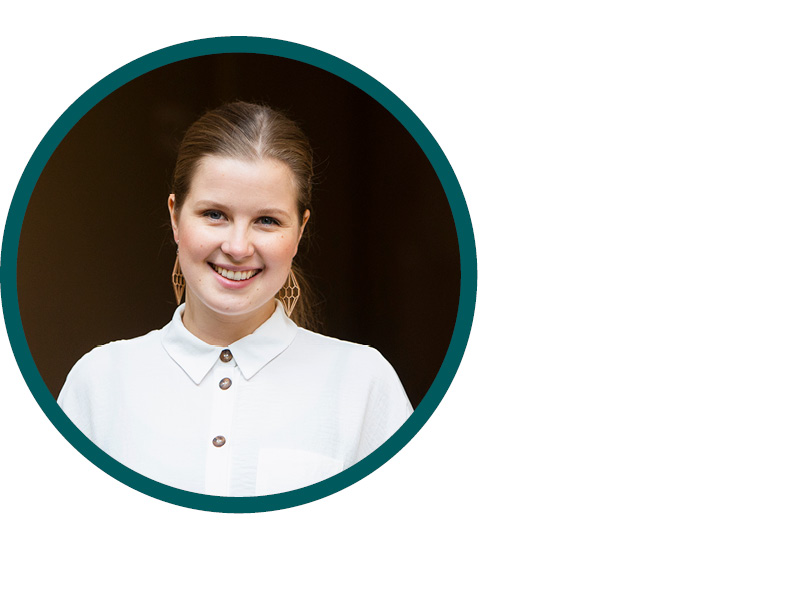
Emilia Hoving
Conductor
Winner of the Finnish critics’ prize 2021 for the Best Newcomer in the Arts, Emilia Hoving has emerged as one of most exciting young Finnish conductors of today.
Last season she made several critically acclaimed debuts including her Germande but whilst Assistant at the Orchestre Philharmonique de Radio France, conducting the orchestra at the Berlin Philharmonie at short notice, her Tokyo debut at Suntory Hall conducting the Yomiuri Nippon Symphony, and her UK debut conducting the Philharmonia at Three Choirs Festival.
In 2022/23 she conducts the BBC Symphony, Royal Liverpool Philharmonic, and BBC National Orchestra of Wales. She debuts at the Adelaide Festival and with Munich Chamber,is invited to Lausanne Chamber, Opera de Rouen, Kitchener-Waterloo Symphony, and returns to Quebec Symphony, Nordic Chamber, Helsingborg Symphony, and Royal Stockholm Philharmonic whom she conducted in the Nobel Prize Award Ceremony.
Emilia Hoving is represented by Intermusica.
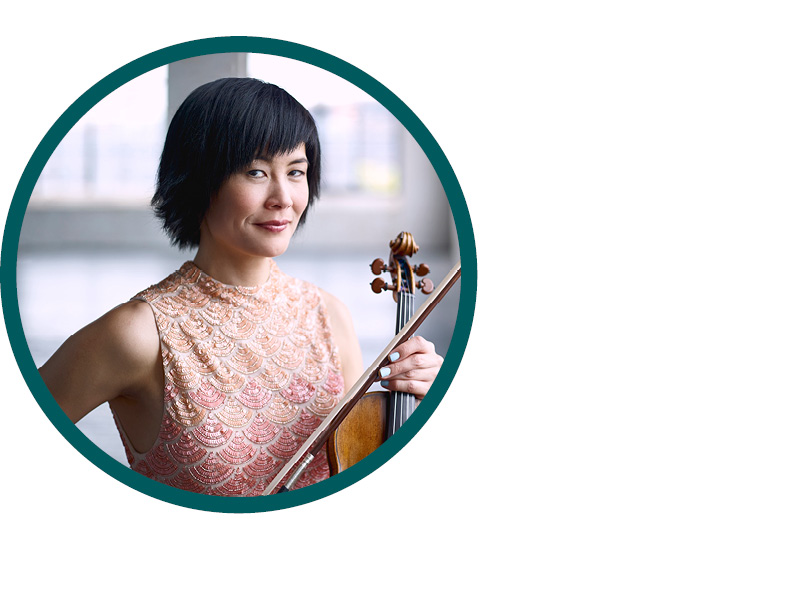
Jennifer Koh
Violin
Grammy Award-winning violinist Jennifer Koh is recognised for her intense, commanding performances, delivered with dazzling virtuosity and technical assurance. A forward-thinking artist, she is dedicated to exploring a broad and eclectic repertoire, while promoting equity and inclusivity in classical music. She has expanded the contemporary violin repertoire through a wide range of commissioning projects, and has premiered more than 100 works written especially for her. Koh has appeared with orchestras worldwide, among them the New York, Los Angeles, and Helsinki Philharmonics; Cleveland, Mariinsky, Minnesota, and Philharmonia (London) Orchestras; and Atlanta, Baltimore, BBC, Chicago, Cincinnati, National, New World, NHK, RAI (Torino), and Singapore Symphonies. She has won the International Tchaikovsky Competition in Moscow, Concert Artists Guild Competition, and an Avery Fisher Career Grant, and was named Musical America’s 2016 Instrumentalist of the Year. Koh has a BA in English literature from Oberlin College and studied at the Curtis Institute, where she worked extensively with Jaime Laredo and Felix Galimir. She is an active curator, lecturer, teacher, and recording artist for Cedille Records, Artistic Director of the Kennedy Center’s Fortas Chamber Music Concerts, and Artistic Director and Founder of the non-profit ARCO Collaborative.
About the Adelaide Symphony Orchestra
The Adelaide Symphony Orchestra is South Australia’s largest performing arts organisation, with a reputation for vitality, versatility and innovation. Since its first concert season in 1936, the ASO has contributed immeasurably to the vibrancy of South Australia’s cultural life.
The Orchestra frequently performs for communities throughout South Australia through regional, community and family concerts and reaches over 16,000 children annually through its comprehensive Learning Program.
In the spirit of innovation, the ASO frequently showcases new music and Australian premieres, and presents works by women as a regular feature of its concert programming.
The Orchestra regularly collaborates with major arts and culture festivals and organisations, including the Adelaide Festival, Adelaide Cabaret Festival, OzAsia Festival, WOMADelaide, State Opera of South Australia and The Australian Ballet.






Festival for the Future
Adelaide Festival is proudly Carbon Neutral and you can help us reduce our impact on the environment further! This year, Adelaide Festival has partnered with Reforest and Trees for Life to support the Mannavale farm bushfire recovery project in Adelaide Hills.
Plant one for the planet as part of your Adelaide Festival experience. You can learn more about the project, take action and track your impact here.
Your contribution through Reforest will help repair the damage caused by both bushfires and historical land clearing, and help Trees for Life plant a range of native species to restore an area of forest habitat for native wildlife.
